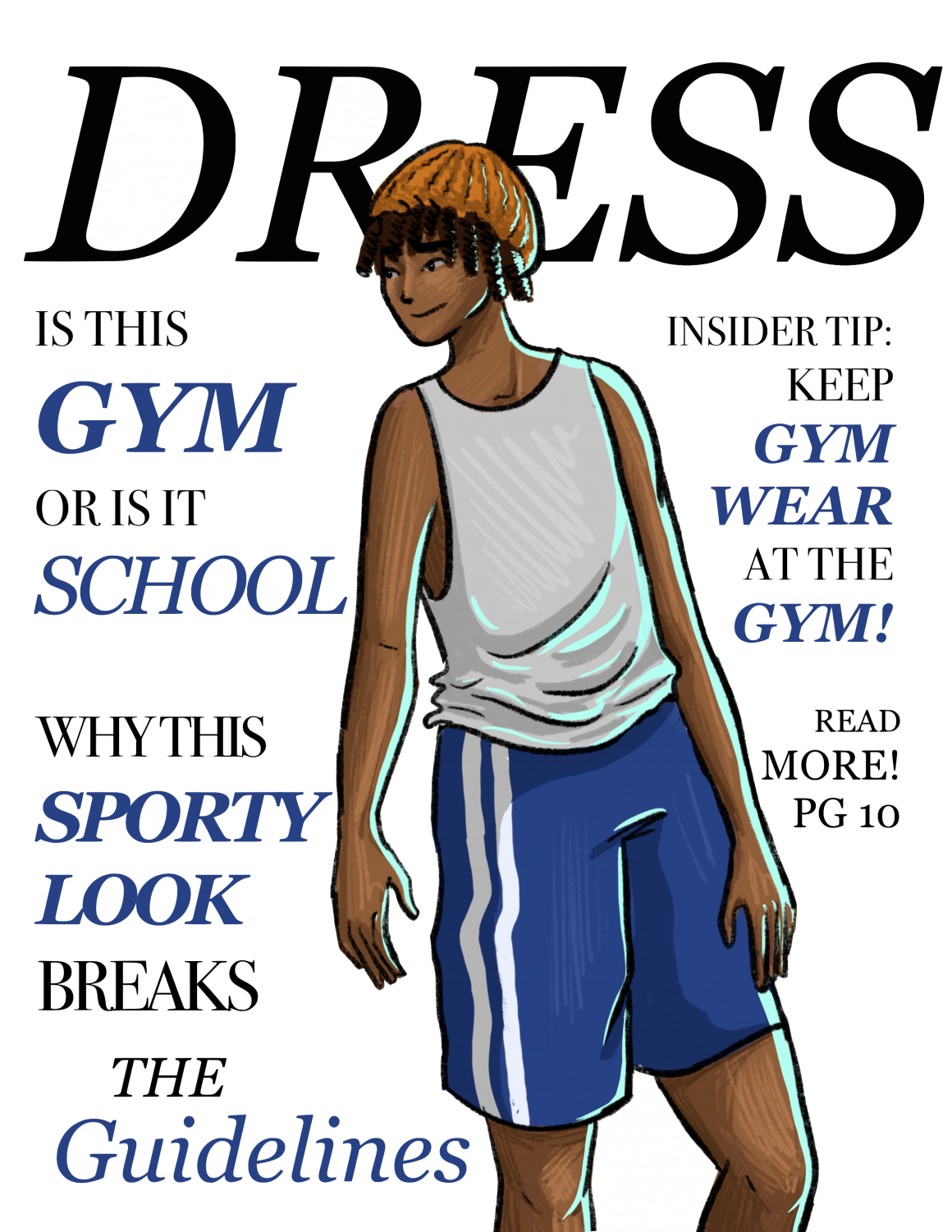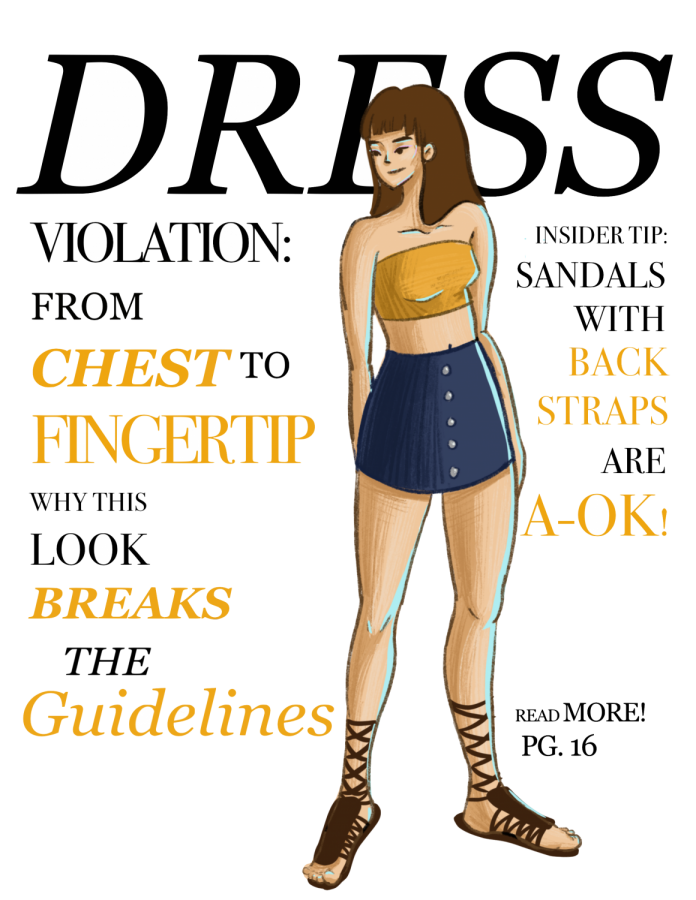Perspectives: Community dress standards
May 23, 2019
Dress choices emphasize expression
While faculty and administration play a major role in deciding the community guidelines for dress, student opinion and changing styles are important factors to consider before making decisions. Clothing is a way for students to display their personality, and since the environment at Harker is so academically inclined, it is easy for students to distinguish themselves through what they wear. What was considered casual a decade or two ago, such as jeans, may have evolved to become acceptable, and it is the subsequent responsibility of the school to recognize and accommodate for these changes.
Formal dress might shorten the amount of time that it takes to pick out clothing in the morning, but it also limits freedom of expression and fits all students into a similar mold. There is such a diversity of personalities at each high school, so this should be taken into account when deciding on the standards by which students are required to follow. In addition, the Harker community is not trying to isolate anyone who chooses to wear formal dress by incorporating different styles of clothing. It instead allows students to comfortably dress and take pride in their clothing. Since dress codes have the ability to evolve over time, it is the responsibility of the school to lead a discussion about alterations when a majority of students have brought up the topic of possible changes.
In addition to the archaic restrictions placed by conservative dressing standards, they often lead to gender bias in terms of enforcement and limitations. For example, articles of clothing considered to be “made for girls,” such as spaghetti straps or short skirts, may be considered a violation of the dress code even though they are commonly sold. Elaborating more on this topic, the shift in styles means that conservative clothing becomes a hassle to find and increases a sense of conformity rather than encouraging individuality.
However, there are certain standards that should always be observed, including the prevention of profanity or offensive symbols on clothing or clothes overly casual for school. Since there is such a fine line between self-expression and unprofessional conduct, allowing student input acts as a chance for students to understand why and what is appropriate to wear. This can also lead to a progressive discussion on the explanation between certain restrictions, such as the recent decision to allow sweatpants to be regarded as appropriate clothing for the rest of the school year, an inclusive experiment designed to test the community’s response. Along with students also being informed on the process of designing a dress code comes the proper enforcement of it, which must lead to a compromise involving the audience affected by it rather than a one-sided debate among faculty members.

Prioritize professionalism
Despite the restriction on expression that many feel community standards of dress pose, the community standards of dress ultimately are for the benefit of the community. The dress of the community forms the first impression of Harker.
As part of a college prep school, Harker’s students should represent the school and dress in a manner appropriate for the setting. During school hours on campus, students are present primarily to learn. A study by Dr. Chris Baumann, an associate professor at Macquarie University, and Hana Krskova, also from Macquarie University, in 2015 found that disciplined environments help students perform in class. It also suggests that schools implement uniforms. While uniforms are extremely restrictive of student expression, a more formal standard of dress would still allow student expression and create a disciplined environment, facilitating student performance.
A theory in criminology, called the broken windows theory, postulates that visible signs of crime or disorder encourage more crime. The broken windows theory suggests that policing minor crimes, such as vandalism, lowers the crime rate of more serious crimes. The atmosphere of a location conveys the amount of policing and care a community gives to its surroundings. If the dress of students does not reflect an orderly and serious atmosphere, according to the broken windows theory, the attitude displayed towards other existing rules is also likely to relax. The dress of the community impacts the atmosphere of the community, which impacts how people will act in the environment. A strict dress code with enforcement could potentially reduce the number of students who ignore other guidelines. Enforcement of a standard of dress is just as important as the standard itself. If it is well known that the enforcement of standards of dress is neglected, there is no impetus for the community to follow the standards of dress.
Maintaining a serious standard of dress reflecting Harker’s status as a college prep would facilitate an environment suitable for learning. The recent change allowing sweatpants reduces the gravity and discipline of the environment, which in turn defeats the purpose of attending an academically robust school.
Styles may have changed, but dress codes are still ubiquitous in modern day society. Even the House of Representatives has a standard of dress written in the Floor Procedure that states that members have to wear appropriate attire.
Community standards of dress are often accused of being discriminatory or being enforced in a discriminatory fashion, but those are flaws in execution and not in the basic concept. Standards of dress can be designed to be non-discriminatory and still serve their intended function. Avoiding singling out specific stylistic choices associated with a single group, such as cornrows, can curb perceived or actual discrimination.
Within standards of dress, there is still room for student expression. Banning clothing unsuitable for a school environment might feel restrictive, but the practice does not inhibit students from expressing themselves through their clothing and other methods. Ultimately, while the community standards of dress may be mildly restrictive of expression, conservative standards of dress allow for an environment more suited for a school.


















![“[Building nerf blasters] became this outlet of creativity for me that hasn't been matched by anything else. The process [of] making a build complete to your desire is such a painstakingly difficult process, but I've had to learn from [the skills needed from] soldering to proper painting. There's so many different options for everything, if you think about it, it exists. The best part is [that] if it doesn't exist, you can build it yourself," Ishaan Parate said.](https://harkeraquila.com/wp-content/uploads/2022/08/DSC_8149-900x604.jpg)




![“When I came into high school, I was ready to be a follower. But DECA was a game changer for me. It helped me overcome my fear of public speaking, and it's played such a major role in who I've become today. To be able to successfully lead a chapter of 150 students, an officer team and be one of the upperclassmen I once really admired is something I'm [really] proud of,” Anvitha Tummala ('21) said.](https://harkeraquila.com/wp-content/uploads/2021/07/Screen-Shot-2021-07-25-at-9.50.05-AM-900x594.png)







![“I think getting up in the morning and having a sense of purpose [is exciting]. I think without a certain amount of drive, life is kind of obsolete and mundane, and I think having that every single day is what makes each day unique and kind of makes life exciting,” Neymika Jain (12) said.](https://harkeraquila.com/wp-content/uploads/2017/06/Screen-Shot-2017-06-03-at-4.54.16-PM.png)








![“My slogan is ‘slow feet, don’t eat, and I’m hungry.’ You need to run fast to get where you are–you aren't going to get those championships if you aren't fast,” Angel Cervantes (12) said. “I want to do well in school on my tests and in track and win championships for my team. I live by that, [and] I can do that anywhere: in the classroom or on the field.”](https://harkeraquila.com/wp-content/uploads/2018/06/DSC5146-900x601.jpg)
![“[Volleyball has] taught me how to fall correctly, and another thing it taught is that you don’t have to be the best at something to be good at it. If you just hit the ball in a smart way, then it still scores points and you’re good at it. You could be a background player and still make a much bigger impact on the team than you would think,” Anya Gert (’20) said.](https://harkeraquila.com/wp-content/uploads/2020/06/AnnaGert_JinTuan_HoHPhotoEdited-600x900.jpeg)

![“I'm not nearly there yet, but [my confidence has] definitely been getting better since I was pretty shy and timid coming into Harker my freshman year. I know that there's a lot of people that are really confident in what they do, and I really admire them. Everyone's so driven and that has really pushed me to kind of try to find my own place in high school and be more confident,” Alyssa Huang (’20) said.](https://harkeraquila.com/wp-content/uploads/2020/06/AlyssaHuang_EmilyChen_HoHPhoto-900x749.jpeg)












